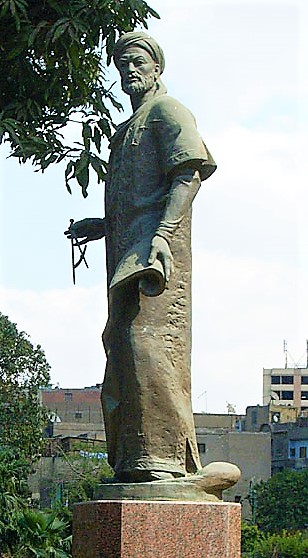861
Appearance
This article needs additional citations for verification. (October 2021) |
| Millennium: | 1st millennium |
|---|---|
| Centuries: | |
| Decades: | |
| Years: |
| 861 by topic |
|---|
| Leaders |
| Categories |
| Gregorian calendar | 861 DCCCLXI |
| Ab urbe condita | 1614 |
| Armenian calendar | 310 ԹՎ ՅԺ |
| Assyrian calendar | 5611 |
| Balinese saka calendar | 782–783 |
| Bengali calendar | 268 |
| Berber calendar | 1811 |
| Buddhist calendar | 1405 |
| Burmese calendar | 223 |
| Byzantine calendar | 6369–6370 |
| Chinese calendar | 庚辰年 (Metal Dragon) 3558 or 3351 — to — 辛巳年 (Metal Snake) 3559 or 3352 |
| Coptic calendar | 577–578 |
| Discordian calendar | 2027 |
| Ethiopian calendar | 853–854 |
| Hebrew calendar | 4621–4622 |
| Hindu calendars | |
| - Vikram Samvat | 917–918 |
| - Shaka Samvat | 782–783 |
| - Kali Yuga | 3961–3962 |
| Holocene calendar | 10861 |
| Iranian calendar | 239–240 |
| Islamic calendar | 246–247 |
| Japanese calendar | Jōgan 3 (貞観3年) |
| Javanese calendar | 758–759 |
| Julian calendar | 861 DCCCLXI |
| Korean calendar | 3194 |
| Minguo calendar | 1051 before ROC 民前1051年 |
| Nanakshahi calendar | −607 |
| Seleucid era | 1172/1173 AG |
| Thai solar calendar | 1403–1404 |
| Tibetan calendar | 阳金龙年 (male Iron-Dragon) 987 or 606 or −166 — to — 阴金蛇年 (female Iron-Snake) 988 or 607 or −165 |

Year 861 (DCCCLXI) was a common year starting on Wednesday (link will display the full calendar) of the Julian calendar.
Events
By place
Europe
- March – Robert the Strong is appointed margrave of Neustria by King Charles the Bald. He re-establishes the Breton March, and extends his remit by campaigning against Salomon, duke 'king' of Brittany. Robert hires a combined Seine-Loire fleet for 6,000 pounds of silver, 'before Salomon can ally with them against him'. In return, Salomon enlists 12 Viking ships under the command of Hastein, to raid the county of Maine, which, with Anjou, becomes squeezed between Brittany and Neustria.
- Spring – The Council of Constantinople, attended by 318 fathers and presided over by papal legates, confirms Photius the Great as patriarch, and passes 17 canons.
- Carloman, eldest son of King Louis the German, revolts against his father. He is captured, but manages to escape to the Ostmark (or 862).
- Summer – Viking raiders sack the cities of Paris, Cologne, Aachen, Worms and Toulouse.
Abbasid Caliphate

- December 11 – Caliph al-Mutawakkil is assassinated by his Turkish guard, starting the period of troubles known as the "Anarchy at Samarra" (861–870). He is succeeded by his son Al-Muntasir, as ruler of the Abbasid Caliphate.
- Ya'qub ibn al-Layth, a Muslim military leader, starts rebelling against the Abbasids and founds the Saffarid Dynasty in the 870s. He rules over parts of Khurasan and eastern Iran, and establishes his capital at Zaranj (modern Afghanistan).
By topic
Hydrology
- Al-Mutawakkil (r. 847–861) orders the construction of a Nilometer on Rhoda Island in central Cairo, supervised by the Persian astronomer Ahmad ibn Muhammad ibn Kathir al-Farghani.
Births
- Abdullah ibn al-Mu'tazz, Muslim poet (d. 908)
- Abu Bakr Shibli, Muslim Sufi (d. 946)
- Al-Mu'tadid, Muslim caliph (or 854)
- Heongang, king of Silla (approximate date)
Deaths
- Shuja also known as Umm Jaʽfar was the mother of Abbasid caliph Al-Mutawakkil.
- April 6 – Prudentius, bishop of Troyes
- December 11
- Al-Mutawakkil, Abbasid caliph (b. 822), On the night of 11 December, about one hour after midnight, the Turk guards burst in the chamber where the Caliph and al-Fath were having supper. Al-Fath was killed trying to protect the Caliph, who was killed next. His son, Al-Muntasir, who now assumed the caliphate, initially claimed that al-Fath had murdered his father, and that he had been killed after; within a short time, however, the official story changed to al-Mutawakkil choking on his drink.[1][2]
- al-Fath ibn Khaqan, chief confidante and councillor of al-Mutawakkil
- Ahmad ibn Muhammad ibn Kathir al-Farghani, Persian astronomer
- Álvaro of Córdoba, Mozarab scholar and theologian
- Ansovinus, bishop of Camerino (approximate date)
- Bai Minzhong, chancellor of the Tang Dynasty (b. 792)
- Gladilanus, Galician clergyman (approximate date)
- Gregory of Khandzta, Georgian archimandrite (b. 759)
- Heonan, king of Silla (Korea)
- Princess Ito of Japan
- Lando I, count of Capua
- Meinrad of Einsiedeln, German hermit and martyr
- Pribina, Slavic prince (approximate date)
- Samuel of Kakheti, Georgian prince
References
- ^ Kraemer 1989, pp. 171–182, 184, 195.
- ^ Kennedy 2006, pp. 264–267.
Sources
- Kennedy, Hugh (2006). When Baghdad Ruled the Muslim World: The Rise and Fall of Islam's Greatest Dynasty. Cambridge, MA: Da Capo Press. ISBN 978-0-306814808.
- Kraemer, Joel L., ed. (1989). The History of al-Ṭabarī, Volume XXXIV: Incipient Decline: The Caliphates of al-Wāthiq, al-Mutawakkil and al-Muntaṣir, A.D. 841–863/A.H. 227–248. SUNY Series in Near Eastern Studies. Albany, New York: State University of New York Press. ISBN 978-0-88706-874-4.